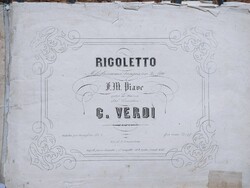In this age of press-button express service, we can search, find and listen to any piece of music in a matter of seconds. Can we even begin to imagine what it was like to discover new music in the 19th century? How would one, for example, get to know a full scale work like a symphony by Beethoven? or an opera premiered recently in La Scala in Milan, in La Fenice in Venice, or in any other theatre across Europe? No radios, no televisions, no internet, no recordings to listen to.
Composers were quick to find an answer - they wrote 'transcriptions' of these large orchestral works for just one instrument. Sometimes the original major works were their own, other times they were by other composers. Most were written for the pianoforte because that was the most popular instrument of the 19th century, but they were also written for other instruments and for voice. To these we must also add piano duets that were very popular.
The Hungarian composer, Franz Liszt (1811-1886) is famous for his pianoforte transcriptions of Beethoven's 9 Symphonies, Paganini's violin works, and Schubert's songs. In the 21st century you can easily search and find these on You tube right now! Liszt transcriptions were difficult works not within every pianist's capabilities. Other composers wrote easier renditions of the same works in order to reach a wider market. And so it was with other large works - especially orchestral or operatic works - there were transcriptions of varying difficulty and by different composers in order to reach most pianists.
Music Publishers immediately saw an advantage to this - Single arias or a particularly catchy melody from an opera, were published separately and sold inexpensively in a few pages of sheet music. Some composers chose to write variations on the themes.
 Simplified single arias from operas sold for 2d at Giovanni Lebrun's music outlet at 82 Strada Teatro, Valletta. ABC, P.1-9
Simplified single arias from operas sold for 2d at Giovanni Lebrun's music outlet at 82 Strada Teatro, Valletta. ABC, P.1-9In Malta in the 1840s, the music shop of Giovanni Lebrun in Strada Teatro (Old Theatre Street) was selling several of these simplified renditions of operatic works, mostly published in Naples. Pianists loved them because they could quietly get to know the arias in the privacy of their own home before attending the Opera. These pieces also became part of the repertoire played in salons of the time. The Maltese composer Dr Paolo Nani (1814-1904), known best of all for his sacred music, also rode the wave of popularity of operatic music and wrote his own renditions of operatic arias for piano.
Early 19th century renditions of Verdi's Rigoletto through which pianists got to know the opera arias.
















